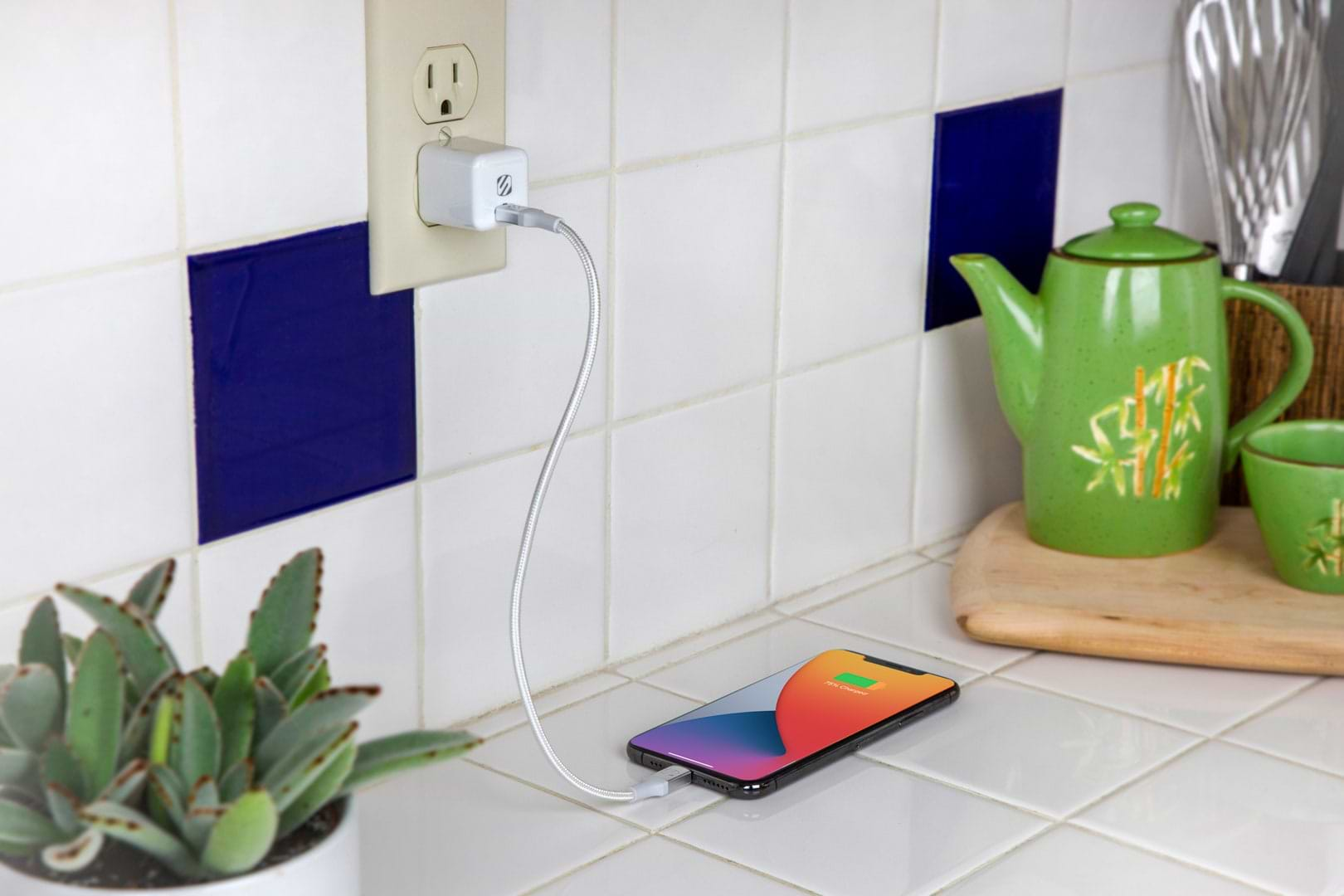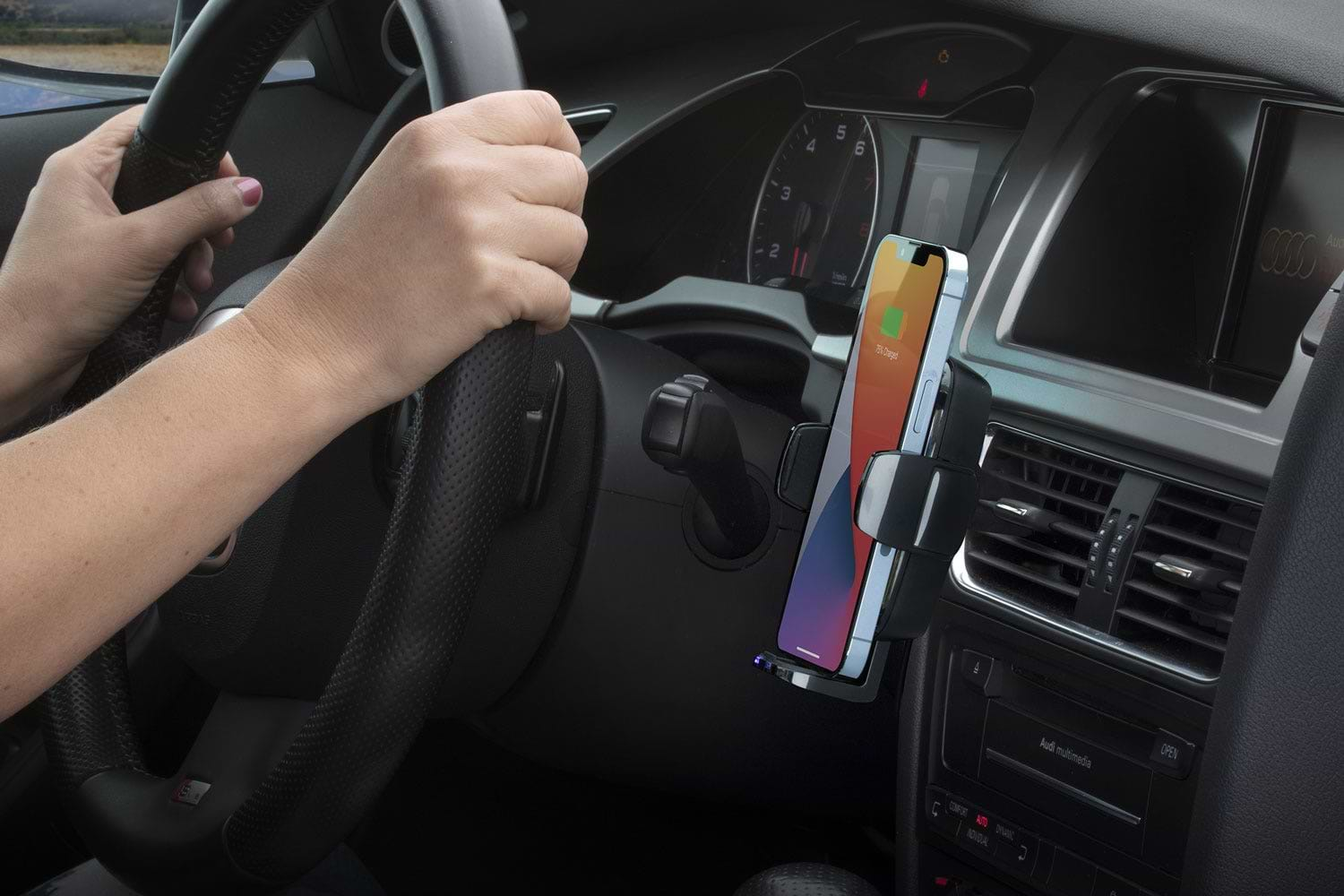Exploring Reasons for Phone Charging Ceasing at 80%

In recent years, smartphone users have become more familiar with a curious phenomenon - their phone's charging process stopping at 80%. This seemingly arbitrary limitation has left many wondering about the reasoning behind it. In this article, we will delve into the factors that contribute to this charging behavior and outline the impact it has on battery health.
Understanding the Basics of Phone Charging
Before we dive into the reasons for the 80% charging limitation, it's important to understand the fundamental principles of phone charging. At the core of this process lies the lithium-ion battery, which is widely used in modern smartphones due to its high energy density and relatively low self-discharge rate.
When you plug your phone into a charger, the electrical current flows into the lithium-ion battery, causing a chemical reaction within it. This reaction involves the movement of lithium ions between the battery's positive and negative electrodes, allowing the battery to store and release electrical energy. This ability to rapidly charge and discharge makes lithium-ion batteries ideal for portable devices like smartphones.
The Role of Lithium-Ion Batteries in Phone Charging
Lithium-ion batteries have revolutionized the way we power our devices. Their compact size and high energy density have made them the go-to choice for smartphone manufacturers. These batteries are able to store a large amount of energy in a relatively small space, allowing our phones to last longer between charges.
Furthermore, lithium-ion batteries have a relatively low self-discharge rate, meaning they can hold onto their charge for longer periods of time. This is particularly useful for smartphones, as we often rely on them throughout the day and don't want to constantly worry about running out of battery.
The Concept of Battery Health in Smartphones
Battery health is a critical aspect to consider when it comes to phone charging. Over time, the capacity and performance of a lithium-ion battery naturally degrade due to chemical reactions occurring within it. This degradation is influenced by various factors, including temperature, usage patterns, and charging habits.
One of the main factors that can accelerate battery degradation is overcharging. When a lithium-ion battery is constantly charged to its maximum capacity, it puts stress on the battery cells and can lead to a decrease in overall battery health. This is why many smartphone manufacturers recommend charging the battery up to around 80% instead of fully charging it to 100%.
Additionally, extreme temperatures can also impact battery health. High temperatures can cause the lithium-ion battery to degrade faster, while very low temperatures can temporarily reduce its capacity. It's important to keep your phone within the recommended temperature range to ensure optimal battery performance and longevity.
Another factor to consider is the charging speed. Fast charging technologies have become increasingly popular, allowing users to quickly top up their battery levels. However, rapid charging can generate more heat, which can potentially impact battery health over time. It's important to strike a balance between charging speed and battery longevity.
In conclusion, understanding the basics of phone charging, the role of lithium-ion batteries, and the concept of battery health is crucial for optimizing the performance and lifespan of your smartphone's battery. By being mindful of your charging habits and following manufacturer recommendations, you can ensure that your phone remains powered up and ready to go whenever you need it.
The 80% Charging Phenomenon Explained
Now, let's dig deeper into the specific reasons why phone charging often stops at 80%. Understanding these factors will shed light on the importance of this limit in maintaining the overall health and longevity of your device's battery.


The Science Behind the 80% Charging Limit
The 80% charging limit is not merely a random number. It is based on the behavior of lithium-ion batteries. Charging a battery up to 100% puts the cells under significant stress, which can lead to increased degradation over time. By stopping the charging process at 80%, smartphone manufacturers aim to strike a balance between battery longevity and usability.
Lithium-ion batteries are composed of multiple cells, each containing a positive electrode (cathode), a negative electrode (anode), and an electrolyte. When a battery is charged, lithium ions move from the cathode to the anode through the electrolyte, storing energy. However, as the battery approaches its maximum capacity, the movement of lithium ions becomes more difficult, leading to increased resistance and heat generation.
At 80% charge, the battery is still within a safe operating range, allowing for efficient energy storage without excessive stress on the cells. This conservative charging approach helps to minimize the risk of overheating, swelling, and potential battery failure.
The Role of Software in Controlling Charging Limits
To enforce the 80% charging limit, smartphone manufacturers employ smart charging algorithms and software. These algorithms closely monitor the battery's voltage and temperature to regulate the charging process and prevent overcharging. This software-driven approach ensures optimal battery health and reduces the risk of potential safety hazards.
The charging algorithm takes into account various factors such as the battery's current state of charge, temperature, and charging history. By analyzing this data, the software determines the optimal charging rate and duration to reach the 80% threshold while maintaining battery health.
Additionally, smartphone manufacturers often provide users with the option to customize their charging limits. This feature allows users to balance their immediate charging needs with long-term battery health. For example, if you need your phone to last longer on a particular day, you can choose to charge it up to 100%. However, it's important to note that frequent charging to 100% may accelerate battery degradation over time.
Furthermore, software updates from manufacturers can improve charging algorithms, ensuring that the charging process becomes even more efficient and tailored to the specific battery characteristics of each device. These updates may also introduce new charging strategies, such as adaptive charging, which learns from your usage patterns to optimize charging times and extend battery life.
In conclusion, the 80% charging phenomenon is not a limitation imposed by smartphone manufacturers to inconvenience users. It is a carefully calculated strategy to balance battery longevity and usability, backed by the science of lithium-ion batteries and supported by intelligent software algorithms. By understanding and respecting this charging limit, you can maximize the lifespan of your device's battery and enjoy long-lasting performance.
Impact of Charging Habits on Battery Life
Now that we understand the reasons behind the 80% charging phenomenon, it's essential to grasp how our charging habits can affect the overall lifespan of the smartphone battery.
When it comes to battery health, overcharging is a significant factor to consider. Overcharging refers to continuously charging your phone beyond its full capacity. This practice can have a detrimental impact on the battery's health. The excess charging causes the lithium-ion battery to generate excess heat, leading to chemical reactions that accelerate capacity loss. Additionally, overcharging increases the risk of battery swelling or even fire hazards.
On the other hand, it is interesting to note that partially charging your phone can actually benefit the long-term health of the battery. Contrary to popular belief, lithium-ion batteries prefer shallow charge cycles. This means charging from, for example, 20% to 80%, instead of a complete 0% to 100% cycle. By adopting this partial charging approach, you can reduce stress on the battery and prolong its overall lifespan.
But why do lithium-ion batteries prefer shallow charge cycles? The answer lies in the chemistry of these batteries. Lithium-ion batteries consist of a positive electrode (cathode), a negative electrode (anode), and an electrolyte solution. During the charging process, lithium ions move from the cathode to the anode, storing energy. When discharging, the process reverses, and the lithium ions move back to the cathode, releasing energy.
However, during a complete 0% to 100% charging cycle, the movement of lithium ions can cause stress on the battery's structure and chemistry. This stress can lead to the formation of unwanted byproducts, such as lithium plating, which can reduce the battery's capacity over time. By avoiding complete charging cycles and opting for partial charging, you can minimize the stress on the battery and mitigate the formation of these byproducts.
Another interesting aspect to consider is the impact of temperature on battery life. Extreme temperatures, both hot and cold, can affect the performance and lifespan of lithium-ion batteries. High temperatures can accelerate the chemical reactions within the battery, leading to faster capacity loss. On the other hand, extremely cold temperatures can slow down the chemical reactions, reducing the battery's overall performance.
Therefore, it is advisable to charge your phone in a moderate temperature environment to ensure optimal battery health. Avoid exposing your phone to direct sunlight or extreme heat, such as leaving it inside a hot car. Similarly, avoid charging your phone in freezing temperatures, as it can negatively impact the battery's performance.
How Different Phone Models Handle Charging
It's worth noting that not all phone models handle charging in the same way. Let's explore the specific charging strategies adopted by two prominent smartphone operating systems: Apple's iOS and Android.
Apple's Optimized Battery Charging Feature
For iPhone users, Apple introduced the Optimized Battery Charging feature. This intelligent software algorithm learns your daily charging patterns and uses this data to prevent your device from reaching a 100% charge until you need it. This feature reduces wear on the battery and helps maintain optimal battery health in the long run.
Android's Adaptive Battery Function
On the other hand, Android devices employ the Adaptive Battery function, available on many newer models. This feature optimizes app usage and restricts battery consumption from rarely-used or power-hungry apps, ultimately extending battery life and reducing the need for frequent charging.
Tips to Improve Phone Charging and Battery Health
Now that we have a comprehensive understanding of the reasons behind the 80% charging limit and its implications on battery life, let's explore some practical tips to improve phone charging efficiency and maximize battery health.
Best Practices for Charging Your Phone
- Avoid overcharging: Unplug your phone once it reaches 80% or shortly after to reduce stress on the battery.
- Charge with the right cable and charger: Always use the original charger provided by the manufacturer or an approved third-party charger to ensure compatibility and safe charging.
- Avoid extreme temperatures: Lithium-ion batteries are sensitive to temperature fluctuations, so avoid exposing your phone to extremely hot or cold environments during charging.
- Enable optimized charging features: If available, utilize your device's optimized charging feature to regulate battery charging and maximize battery health.
Maintaining Battery Health Over Time
- Avoid complete battery drains: Try to avoid fully discharging your phone's battery regularly, as this can strain the cells and expedite capacity loss.
- Perform full charge cycles occasionally: Every few months, allow your phone to go through a full charge cycle (0% to 100%) to recalibrate the battery indicator and maintain accurate battery readings.
- Keep your software up to date: Manufacturers often release software updates that include battery optimizations and improvements. Keeping your software up to date ensures you benefit from these enhancements.
Conclusion
In conclusion, the 80% charging limit imposed by smartphone manufacturers is driven by the desire to balance battery longevity and usability. By understanding the science behind lithium-ion batteries, the impact of charging habits, and the strategies employed by different phone models, users can optimize their charging routines and enhance battery health. By following best practices and adopting smart charging strategies, smartphone users can ensure their devices last longer and provide reliable performance over time.